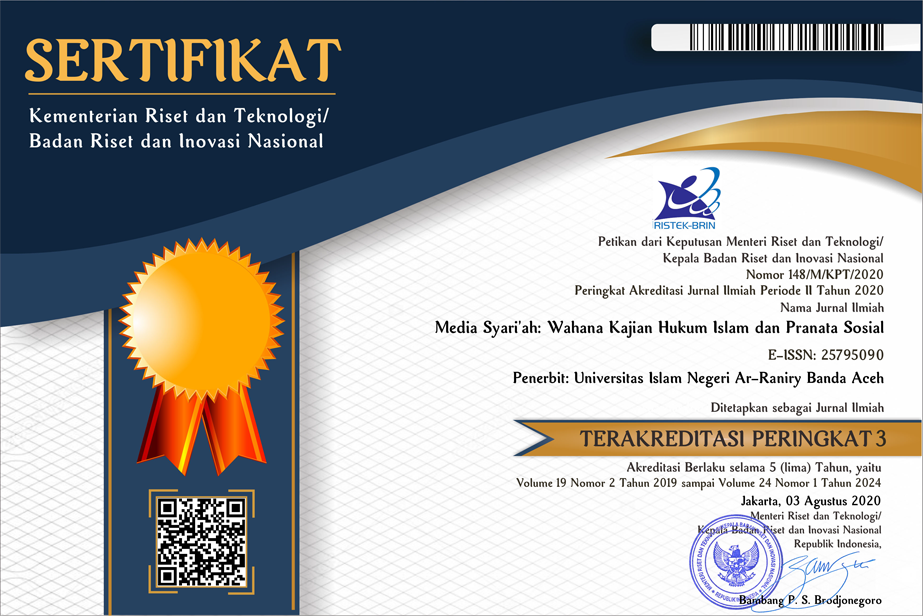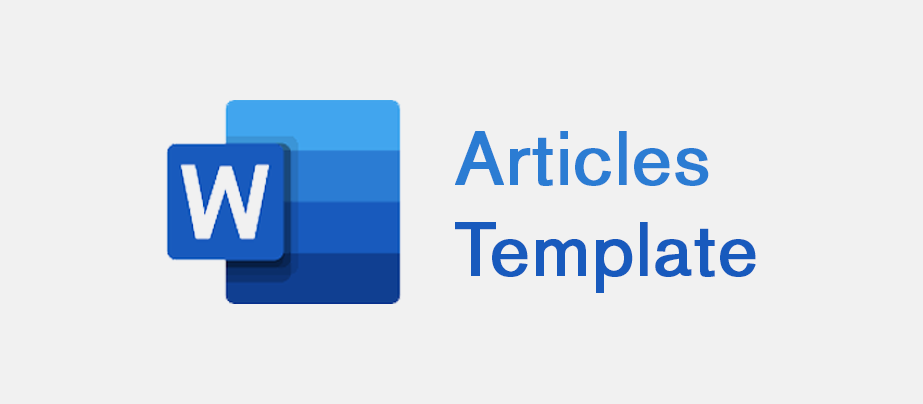JEJAK PERSIA DALAM SASTRA MELAYU
DOI:
https://doi.org/10.22373/jms.v15i1.1766Keywords:
Parsi, Melayu literary, book literary, tale, sufismAbstract
The contribution and the influence of Parsi in Nusantara appears in the prayers, rituals and Sufi trend of thoughts; vocabulary, writing style of a saga, poetry, patterned work history, manners, kanun law and religious treatises, commonly called literary books. Splendor of this highly motivated Parsi influence back to the chronicles in the 15th century AD; territory controlled by Persia Timurid dynasty, which greatly promotes the development of culture and literature. Parsi literary and intellectual fields in general retracing its development peak, while the Arabic literary declined. Meanwhile institutionalization of Islam in Nusantara began to grow in the 13th – 15th century, for example in Samudra Pasai (1272-1516 AD) and Malacca (1400-1511 AD). In this article, it will present four Malay literature that assessed many literary works influenced by Parsi, such as the Taj al-Salatin, Hikayat Amir Hamzah, Hikayat Muhammad Ali Hanafiyah, and the Hikayat Burung Pingai.References
Alfian, Ibrahim. 1999. Wajah Aceh Dalam Lintasan Sejarah. Banda Aceh: Pusat Dokumentasi dan
Informasi Aceh.
al-Attas, S. M. Naquib. 1971. Concluding Postscript to the Origin of the Malay Sha`ir. Kuala Lumpur: Dewan Bahasa dan Pustaka.
Arberry, A. J. 1958. Classical Parsin Literature. London: George Allen & Unwin Ltd.
Ash-Shiddieqy, Muhammad Hasbi. 1997. Pokok-pokok Pegangan Imam Mazhab. Semarang: Pustaka
Rizki Putera.
Boyle, A. 1975. “Umar Khayyam: Astrnomer, Mathematician and Poetâ€. Dalam R. N. Fyre. The
Cambridge History of Iran. Vol. 4. London: Cambridge University Press. Braginsky, V. I. 1993. Tasawuf dan Sastera Melayu: Kajian dan Teks-teks. Jakarta: RUL.
Braginsky, V. I. 1998. Yang Indah, Yang Berfaedah dan Kamal: Sejarah Sastra Melayu Dalam Abad 7-19
M. Jakarta: INIS.
Brakel, L. F. 1975. The Hikayat Muhammad Hanafiyyah. The Hague: Martinus Nijhoff.
Brakel, L. F. 1969-1970. “Parsin Influence on Malay Literatureâ€. Dalam Abr. Nahrain. Jilid 9: 407-
Fang, Liaw Yock. 1982. Sejarah Kesusastraan Melayu Klasik. Singapura: Pustaka Nasional Pte. Ltd. Hadi W. M., Abdul. 2002. Tasawuf Yang Tertindas: Kajian Hermeneutik Terhadap
Hadi W. M., Abdul. 2001. Islam: Cakrawala Estetik dan Budaya. Jakarta: Pustaka Firdaus.
Hadi W. M., Abdul. 1985. Sastra Sufi: Sebuah Antologi. Jakarta: Pustaka Firdaus. Hadi W. M., Abdul. 1998. Karya-karya Terpilih Kesusastraan Arab dan Parsi. Hamid, Ismail. 1983. Kesusasteraan Melayu Lama dari Warisan Peradaban Islam.
Hashim Ameer, Ali, etc. 1969. Whisper of the Angel: Selecetions from Fourteen English Translations of
Ghalib. New Delhi: Ghalib Academy.
Hasymi, Ali. 1975. Syarah Ruba`i Hamzah Fansuri oleh Syamsudin al-Sumaterani. Kuala Lumpur: Dewan Bahasa dan Pustaka.
Hasymi, Ali. 1995. Sejarah Kebudayaan Islam. Jakarta: Bulan Bintang.
Hussain, Khalid. 1966. Tajus Salatin. Kuala Lumpur: Dewan Bahasa dan Pustaka.
Karya-karya Hamzah Fansuri. Jakarta: Yayasan Paramadina.
Modul Kuliah Pusat Pengajian Jarak Jauh, Universiti Sains Malaysia, P. Pinang, Malaysia.
Pellat, Charles. 1972. â€Jewellers with Words: The Heritage of Islamic Literature†dalam Bernard
Lewis (ed.). The World of Islam. London: Thames and Hudson.
Ronkel, Ph. S., Van. 1895. De Roman van Amir Hamzah. Disertasi. Leiden: E. J. Brill.
Schimmel, Annemarie. 1985). And Muhammad is His Messenger: The Veneration of the Prophet in
Islamic Piety. Chapel Hill and London: The University of North Carolina Press. Sou’yb, Joesoef. 1970. Sejarah Khulafaur Rasyidin. Jakarta: Bulan Bintang.
Yahaya, Mahayudin Haji. 1998. Islam di Alam Melayu. Kuala Lumpur: Dewan Bahasa dan Pustaka.
Downloads
Published
Issue
Section
License
MEDIA SYARI'AH: Wahana Kajian Hukum Islam dan Pranata Sosial has CC-BY-SA or an equivalent license as the optimal license for the publication, distribution, use, and reuse of scholarly work. Authors who publish with this journal agree to the following terms:
1. Authors retain copyright and grant the journal right of first publication with the work simultaneously licensed under a Creative Commons Attribution-ShareAlike 4.0 International License that allows others to share the work with an acknowledgment of the work's authorship and initial publication in this journal.
2. Authors are able to enter into separate, additional contractual arrangements for the non-exclusive distribution of the journal's published version of the work (e.g., post it to an institutional repository or publish it in a book), with an acknowledgment of its initial publication in this journal.
3. Authors are permitted and encouraged to post their work online (e.g., in institutional repositories or on their website) prior to and during the submission process, as it can lead to productive exchanges, as well as earlier and greater citation of published work (See The Effect of Open Access).
You are free to:
Share — copy and redistribute the material in any medium or format.
Adapt — remix, transform, and build upon the material for any purpose, even commercially.
The licensor cannot revoke these freedoms as long as you follow the license terms.
All papers published in MEDIA SYARI'AH: Wahana Kajian Hukum Islam dan Pranata Sosial are licensed under a Creative Commons Attribution-ShareAlike 4.0 International License.



.png)


.png)
.png)
.png)



